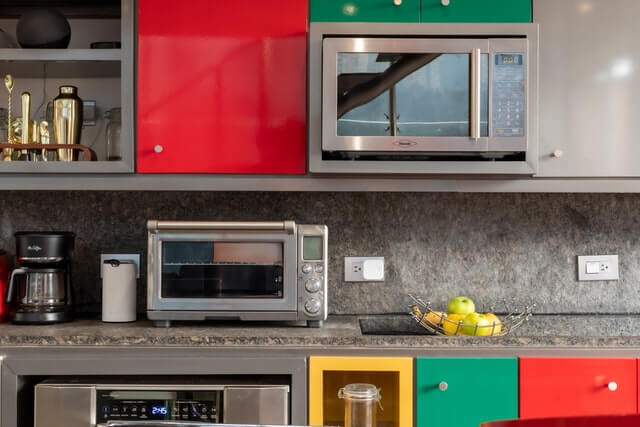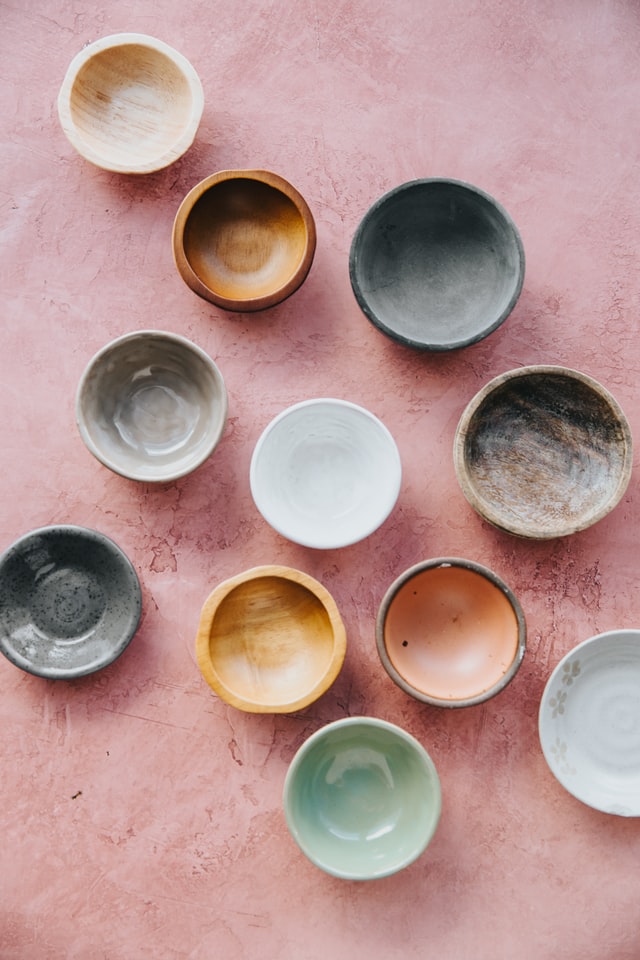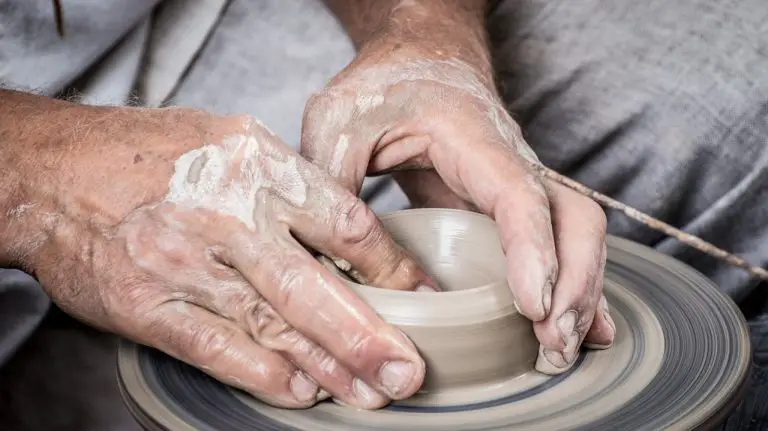Ceramics Vs Pottery: What Is The Difference?
You often hear people use the words “ceramics” and “pottery” interchangeably.
Admittedly, they are very similar. But there is actually a slight difference between these two words that is important to know.
All pottery is considered ceramics, but not all ceramics is considered to be pottery.
Continue reading if you want to know more!
What is Pottery?
The term pottery refers to any container made out of clay. Pottery is made by forming clay, either by hand or with a potter’s wheel, into the desired shape, usually a vase or pot-like shape.
Although using a pottery wheel is the most common way to shape the clay, there are also many other ways to mold the clay, such as slab pottery, handbuilding, or coil pottery.
After the clay is shaped, it is then heated, like ceramics are, to harden it and make sure it can hold its shape.
Pottery can be dated back to the neolithic era, with examples of pottery being found in the Czech Republic that can be dated as far back as 29,000 B.C.
Examples of pottery
Below you can find a few good examples of pottery. As you can see, they are all containers (cups, mugs, vase, etc.) made out of clay.
What is pottery made of?
Pottery is always made out of clay. However, there are many different types of clay that you can use. The most common pottery clays are earthenware, stoneware, and porcelain.
These three types of clays are all slightly different in terms of color, roughness, porosity, price, etc.
However, the most important difference between these clays is the temperature required to turn them into solid pottery. Some clays need to be heated above 2000 degrees Fahrenheit before they fully mature.
After the pots have been fired, a thin glaze can be applied for decorative purposes or to make the pots food-safe.
What is pottery used for?
The main purpose of pottery is to hold liquids or food. So it’s not surprising that most pottery is in the shape of a mug, bowl, cup, plate, vase, etc.
However, sometimes you can find some pottery pieces that are merely for decorative purposes. Such as large and colorful vases that can’t actually hold any water.
What is Ceramics?
Ceramics is any item that is made with a non-metallic material and is heated to the point that its physical properties change.
For example, clay is the most common material used in ceramics. Normally, it will dissolve when put in water. However, if clay is heated to between 660 F and 1470 F (350 and 800 C) in a kiln, its chemical composition will change, and the clay will no longer dissolve when it comes in contact with water.
While clay is the most common material used for ceramics, many other materials such as silica, sand, lime, alumina, and flux can also be used. And there are even some advanced ceramics that are used in the production of semiconductor, spaceships, etc.
The earliest evidence of ceramics date back at least 26,000 years, with the earliest ceramics being found in south-central Europe.
Ceramics are any product (such as earthenware, porcelain, or brick) made essentially from a nonmetallic mineral (such as clay) by firing at a high temperature.
Merriam-Webster.com
Examples of ceramics
Below you can find a few examples of ceramics. As you can see, ceramics is much more than only pots and vases.
For more examples, you can also read our articles on the best ceramicists to follow or ceramic materials.
What is ceramics made of?
Ceramics can be made out of any inorganic non-metallic minerals that changes its physical properties when heated at sufficiently high temperatures.
Of course, this includes the earthenware, stoneware, and porcelain clays that are used for pottery as well. But other materials such as quartz, aluminum oxide, silicon carbide, etc.
By carefully adding extra minerals and changing the ratios between them, it’s possible to control the properties (strength, durability, hardness, etc.) of the final product. And developing advanced ceramics is a heavily researched field in material science.
What is ceramics used for?
The uses for ceramics are almost endless. Traditional ceramics that are made from clay are the same as pottery. So they are used for holding liquids or storing food.
Other ceramic materials you can see in your daily life include glass, bricks, and tiles.
Advanced ceramics are most commonly used in electrical, electronic, optical, and magnetic applications.
In electronic and electrical industries these advanced ceramic materials can be used to fabricate ceramic capacitors, vibrators, temperature sensors, sonar, microphones, oscillators, etc. Magnetic ceramics can also be used to made antennas and inductors.
As a consumer, you might unconsciously have some across advanced bioceramics, which as used as dental implants, eyeglasses, and hip/knee replacements.
What is the difference between pottery and ceramics?
The main differences between pottery and ceramics can be found in the type of starting material and the shape.
Both pottery and ceramics are made from materials that change their physical properties when heated.
Clay is the most obvious example. Both ceramics and pottery can be made from clay.
However, the big difference is that pottery is always made out of clay, while ceramics can be made from any non-metallic material.
The second difference is the shape of the object. Pottery is normally shaped as a container such as cups, bowls, plates, vases, etc. But ceramics can be made into any shape you want.
So while pottery is often functional, ceramics don’t necessarily have to be. In the examples of ceramics shown above, you can find many crazy shapes that are made as decorative art.
Of course, that doesn’t mean that pottery can’t be beautiful or isn’t considered to be an art. But you are more limited when it comes to the shapes you can make.
In summary, ceramics is an umbrella term that includes pottery but also many other materials. So pottery is considered to be ceramics, but not every ceramic is pottery.
What is the difference between commercial pottery and studio pottery?
Commercial pottery is a type of pottery that is mass manufactured and that you can find in regular stores, while studio pottery is handcrafted by a potter and is also referred to as “art pottery”.
Commercial pottery is made by using molds, which makes the pottery making process very fast and reliable. As a result, commercial pottery is normally very cheap. But every piece will also look exactly the same.
On the flip side, studio pottery is made by hand, which makes every piece unique. Studio pottery often has more unique shapes and colors than commercial pottery. You might even be able to request a personal design if you ask the potter. However, since everything is handmade, studio pottery is also considerably more expensive than what you are used to seeing in the store.



